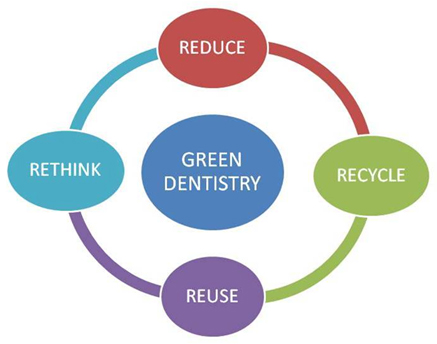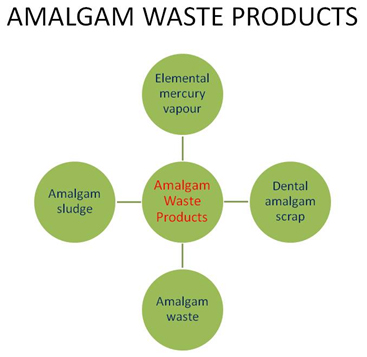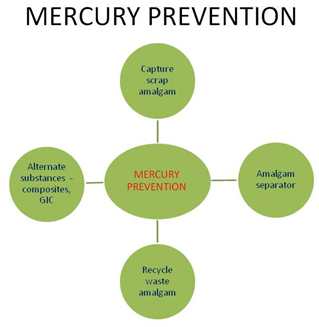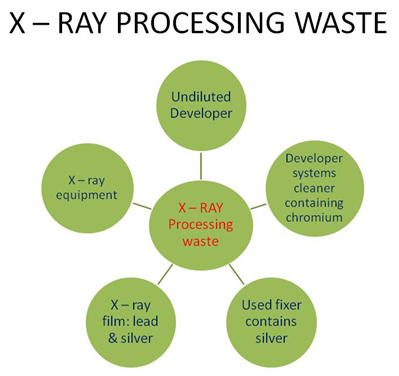Green Dentistry, A Metamorphosis Towards an Eco-Friendly Dentistry: A Short Communication
Varun Rastogi1, Rachna Sharma2, Lalita Yadav3, Pranali Satpute4, Vandana Sharma5
1Reader, Department of Oral & Maxillofacial Pathology, Kalka Dental College, Meerut Uttar Pradesh, India.
2Senior Lecturer, Department of Oral & Maxillofacial Pathology, Seema Dental College & Hospital, Rishikesh Uttrakhand, India.
3 Senior Lecturer, Department of Oral & Maxillofacial Pathology, Kalka Dental College, Meerut, Uttar Pradesh, India.
4Senior Lecturer, Department of Oral & Maxillofacial Pathology, Govt. Dental College Nagpur, Maharashtra, India.
5Senior Lecturer, Department of Oral & Maxillofacial Pathology, Kalka Dental College, Meerut Uttar Pradesh, India.
NAME, ADDRESS, E-MAIL ID OF THE CORRESPONDING AUTHOR: Dr. Varun Rastogi, Reader, Department of Oral & Maxillofacial Pathology, Kalka Dental College, Meerut-250006, Uttar Pradesh, India.
Phone: 07417864865,
E-mail:drvarunrastogi@gmail.com
Dentistry is most importantly and foremost a healing profession. In today’s world, it is very necessary to understand the importance of being eco-friendly in every facet of our lives, including dental practice which has a huge impact on the environment due to the large amount of metallic waste generated by various dental procedures along with excessive use of water and electricity, which specifically emphasis the thrust to move towards ‘Green dentistry’. Green dentistry is an innovative way of dental practice which is environment friendly and at the same time conserves money and time by reducing waste, conserving energy and decreasing pollution with the use of latest techniques and procedures. Green dentistry therefore, protects the environment and mankind from the hazards of rapid urbanisation in developing countries. The authors wish to emphasize the practice of eco-friendly, green dentistry in a developing country like India which needs to conserve resources and curb environmental pollution.
Dental wastes, Developing country, Environment, Innovative dentistry
Introduction
The color green has healing power and is understood to be the most restful and relaxing color. Green can help enhance vision, stability and endurance. Renewal, growth, and hope are related to this color and it indicates safety in the advertising of drugs and medical products [1]. Green Dentistry is an approach to dentistry that combines dental practices and environmental conservation.
The key concepts of a green dental practice include conservation of water and energy, use of non-toxic products, reduction of waste, and elimination of hazardous toxins that negatively affect patients and the environment and promote ‘green’ products.
Discussion
Eco-Friendly dentistry is a newly evolving practice of dentistry, which encompasses a simultaneous devotion to sustainability, prevention, precaution, and a minimally invasive patient-centric as well as global-centric treatment philosophy [2].
Green dentistry is a whole - earth approach to tooth care that reduces the environmental impact of dentistry and creates a caring environment for patients. It is based on the model of four R’s – Rethink, Reduce, Re-use and Recycle [Table/Fig-1] [3].
By adaptation of high technology and the use of good common sense, we can be a part of dentistry’s clean, green and highly profitable future. This can be achieved by following the use of these simple things:
• Sparingly use of energy - Dental procedures uses huge amount of electricity which can be reduced by using latest technologies such as motion sensors, turning off light and use of CFL in the clinics.
• Sparingly use of water - Wastage of water should be avoided by turning off the tap during washing hands.
• Curtail radiation - Usage of digital X-rays rather than conventional X-rays scales down the amount of radiation and the quality of the images will also be more improvised.
• Reprocessing - Many materials found in a dentist’s clinic can be recycled, including paper cups, paper, magazines, general waste and cloths which helps to reduce costs as well as waste.
• Applying technology - Use of computers for the storage of data in relation to patient records will not only eliminate the paper usage but will be more accurate.
The four processes responsible for most of the dental practice waste and pollution are [4]: (1) Placement and removal of mercury containing dental material. (2) Conventional X-ray systems. (3) Infection control methods including disposable barriers, sterilization items and toxic disinfectants. (4) Conventional vacuum saliva ejector systems.
Mercury is being used in the form of dental amalgam restorative material for more than 150 years [5]. In recent years the impact of heavy metal contamination of water systems by dentists, via the production of dental amalgam waste is much of a concern. Dental amalgam is 50% mercury with silver, tin and lead and other minerals that can contaminate the environment [6-9]. The various dental amalgam waste products are shown in [Table/Fig-2]. However,once mercury enters water or soil, bacteria convert it into methylmercury,a potent neurotoxin that can cause brain, kidney and lungdamage in humans. As severe as the consequences of mercurypoisoning are, it’s amazingly easy for people to reach high levels ofexposure [5-10]. The solutions for preventing mercury pollution [11]are shown in [Table/Fig-3].
All the conventional dental offices used traditional film X-rays. This technology has two significant environmental hazards: silver and lead. The source of pollution for silver is unused fixer and unused films and for lead, it is lead foil in film packet and lead apron/shield. The different forms of waste generated as a result of X –ray processing in the dental offices [12] is shown in [Table/Fig-4].The ways for preventing X- ray waste pollution [4] are: (1). Capture waste lead. (2). Filter used fixer (3). Dilute developer (if required). (4). Use non chromium system developer cleaners. (5). Recovery andRecycle X-ray film as scrap metal. (6). Shift to digital imaging.
Different kinds of disposables used in dentistry are latex gloves, disposable patient bibs, head rest covers, syringes, plastic pouches, plastic suction tips. These disposable items should be discarded to prevent pollution [13] and should be replaced by the following: 1. Cloth patient bib 2. Reusable cups. 3. Cloth head rest covers. 4. Reusable metal suction tips 5. Cloth operatory and sterilization methods.
Saliva ejector systems, also known as dental vacuum systems, are a critical piece of machinery for any dental office. Unfortunately, these dental vacuum systems utilize tremendous amount of water leading to wastage and to water pollution [14]. Hence the use of a dry vacuum system is the need of the day.
The 4 R’s of green dentistry

Dental Amalgam waste products

Prevention for mercury pollution


Conclusion
Green dentistry reduces supply costs by integrating dental innovations, and increases productivity by efficient use time, reducing wastage and preventing pollution. Ultimately patients get benefitted by quality treatment with reduction in treatment costs. To conclude we quote Ray Kroc “As long you are green, you are growing. As soon you are ripe, you start to rot.” So let us go green today and save mother Earth from biohazards for a better tomorrow.
[1]. Color meaning. Retrieved fromhttp://www.bourncreative.com/meaning-of-thecolor-green Accessed. (October 2013). [Google Scholar]
[2]. What is eco – friendly dentistry? Retrieved fromhttp://www.orasurgery.com/ecofriendly/want-is-eco-friendly.php Accessed. (October 2013). [Google Scholar]
[3]. F Pockrass, I Pockrass, The four “R’s” of Eco - friendly dentistry.Am Dent Hyg Assoc. 2008 22:18-21. [Google Scholar]
[4]. What exactly is green dentistry? Available from:http://www.ecodentistry.org/ Accessed. (October 2013). [Google Scholar]
[5]. Chin G, Chong J, Kluczewska A, Lau A, Gorjy S, Tennant M, The environmental effects of dental amalgam. Australian Dental Journal. 2008 45(4):246-96. [Google Scholar]
[6]. RT Kao, S Dault, T Pichay, Understanding the mercury reduction issue: the impact of mercury on the environment and human health.J Calif Dent Assoc. 2004 32(7):574-79. [Google Scholar]
[7]. L Samek, Disposing of hazardous waste. An update on waste management studies.Ont Dent. 1994 71(7):19-20. [Google Scholar]
[8]. K Anderson, Creating an environmentally friendly dental practice.CDS Rev. 1999 14:12-18. [Google Scholar]
[9]. R Chilibeck, Mercury pollution in dental office waste water.J Can Dent Assoc. 2000 66(4):174-75. [Google Scholar]
[10]. KD Rogers, Status of scrap (recyclable) dental amalgams as environmental health hazards or toxic substances.J Am Dent Assoc. 1989 119:159-66. [Google Scholar]
[11]. F Pockrass, I Pockrass, Eco-dentistry: A model of mercury-free dentistry.Journal of Ecologically Sustainable Medicine. 2005 2(3):17-22. [Google Scholar]
[12]. CJ Palenik, Managing regulated waste in dental environments.J Contemp Dent Pract. 2003 4:76 [Google Scholar]
[13]. K Anderson, Creating an environmentally friendly dental practice.CDS Rev. 1999 (1):12-8. [Google Scholar]
[14]. M Hiltz, The Environmental Impact of Dentistry.J Can Dent Assoc. 2007 73(1):59-62. [Google Scholar]